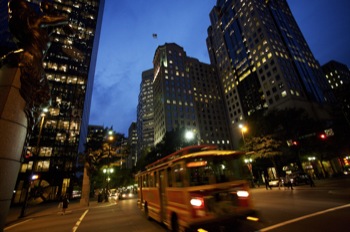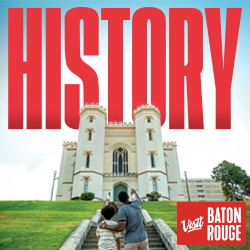
Courtesy Visit Charlotte
Is it possible to find a small-town feel inside a big city? In some of the South’s urban centers, the answer is a resounding yes.
Although a metropolis can seem an imposing jungle of concrete and steel, distinctive neighborhoods in many Southern cities lend a hometown feel to certain streets.
Sometimes these neighborhoods are cultural districts, defined by the variety of theaters, galleries and studios that become the gathering places of local artists. In other places, these neighborhoods trace their roots to a particular ethnic heritage and still show signs of the culture groups that made them famous.
As you travel through the South, take some time to visit the neighborhoods that lend their charm to large cities. From the Fondren District in Jackson, Miss.; NoDa in Charlotte, N.C.; and Virginia-Highland in Atlanta to Ybor City in Tampa, Fla.; the Quapaw Quarter in Little Rock, Ark.; and Old Louisville in Louisville, Ky., these “cities inside cities” will add a characteristic local flavor to your trip.
Old Louisville
Louisville, Ky.
Not far from the busy commercial downtown of Kentucky’s largest city, the tree-lined streets of Old Louisville feature some of the most beautiful homes in the state.
“Old Louisville has one of the largest collections of Victorian homes in the country,” said Susan Dallas, communications manager for the Greater Louisville Convention and Visitors Bureau.
“The architecture is absolutely gorgeous. It has all sorts of different styles, such as Queen Anne, Richard’s Romanesque and Renaissance Revival.”
One of the best-known parts of Old Louisville is St. James Court. A central fountain and gas lanterns give this street the feel of a European neighborhood.
Many visitors tour the Conrad-Caldwell Mansion, a historic home that reflects many of the typical architectural characteristics of the neighborhood. From there, groups can go on a variety of tours of Old Louisville, such as historic walking tours, driving tours and a ghost tour led by a local historian and author.
Another highlight of Old Louisville is Central Park.
“It was designed by Frederick Law Olmsted, who also designed Central Park in New York,” Dallas said. “In the summer, the Kentucky Shakespeare Festival holds its productions there. It’s the oldest free Shakespeare festival in the country.”
Numerous other special events take place in Old Louisville throughout the year. During the winter, a holiday house tour takes visitors to approximately 15 private homes, including one where the residents make bourbon ball candy treats. Additional private homes are open for the summer garden tour.
But the most notable event in Old Louisville is the St. James Art Fair, which takes place the first full weekend in October.
“There are over 700 artists,” Dallas said. “It’s a juried show, so you see very nice things. You have glass, furniture, painting, jewelry and candles.”
www.gotolouisville.com
Virginia-Highland and Grant Park
Atlanta
A pair of historic neighborhoods make great stopping places for groups visiting Atlanta. Like many cities, Atlanta saw a migration out of Virginia-Highland and Grant Park in the 1960s and 1970s, but an influx of young people moving back into the city has brought these neighborhoods to life again.
“Virginia-Highland is a residential area that was established in the early 1900s,” said Jo-Ann Haden Miller, director of cultural affairs at the Atlanta Convention and Visitors Bureau. “Over the years, it has kept the quality of these small bungalows, and a small commercial area has built up around it, too. It’s a great place for visitors to come and enjoy great shopping, restaurants and clubs.”
One of the favorite clubs in the neighborhood is Blind Willie’s, a modest venue that is known as one of the best spots in Atlanta to hear live blues music. Atkins Park, one of the first bars established in the neighborhood, makes a great nighttime stop as well.
Grant Park, meanwhile, is known more for its cultural institutions.
“Grant Park is centered around a 100-acre park,” Miller said. “It houses Zoo Atlanta, which is our oldest cultural attraction. It’s also the home of the Atlanta Cyclorama, which is the largest painting in the world about the Civil War.”
Many groups visiting Grant Park make a stop at Historic Oakland Cemetery, where they can take guided tours that highlight the graves of Civil War soldiers and prominent figures from Atlanta’s past.
www.atlanta.net
Ybor City
Tampa, Fla.
In the late 19th century, a large influx of immigrants from Cuba brought a distinct Latin flavor to the Tampa neighborhood called Ybor City. Today, visitors can still experience the heritage of Cuba and the heritages of other countries that make Ybor City unique.
“Ybor City was always a place where immigrants were welcomed,” said Lindsey Guthrie, manager of national public relations for Tampa Bay and Company. “The neighborhood was named after a Cuban refugee who came here in hopes of starting a new life. He brought his cigar industry to Tampa Bay, and it thrived for many years.”
Ybor’s cigar business sparked others as well, and by the late 1800s, there were more than 200 cigar factories employing some 1,200 workers in Ybor City. At one point, it was the largest cigar-producing community in the world, turning out more than 700 million cigars every year.
Groups touring Ybor City can still see cigars being rolled by hand at two different factories in the area or can arrange to have an expert come and do a private demonstration. There are numerous other ways to enjoy the area’s heritage as well, such as historic restaurants, shops and hotels.
“There are some fantastic bars and restaurants,” Guthrie said. “The Columbia restaurant is the oldest restaurant in the state of Florida. It opened in 1905, and it’s being operated by the fifth generation of the same family. They do a flamenco show six days a week.”
Visitors can find more history and cultural information at the Ybor City State Museum.
“The museum is the authority on all that is historical in Ybor City,” Guthrie said. “It’s a beautiful place to walk through; they have a great collection of photography and artifacts from the cigar culture.”
The museum staff can take groups on historical tours and evening ghost tours of the neighborhood.
Quapaw Quarter
Little Rock, Ark.
It may be a stretch to call it a neighborhood, but the large Quapaw Quarter is one of Little Rock’s most historic and distinctive districts.
“The Quapaw Quarter is a fairly large area of restored 19th-century homes in downtown Little Rock,” said Gretchen Hall, director of communications at the Little Rock Convention and Visitors Bureau. “It’s basically nine square miles of antebellum and Victorian homes.
“It has a couple of different driving and walking tours, because a lot of the homes in the district are on the National Register of Historic Places.”
Among the most famous houses in the Quapaw Quarter is the Arkansas Governor’s Mansion, which is open for tours by prior arrangement, as well as the Villa Marie, an 1881 home that was used for exterior shots of the Sugarbaker studio in the television series “Designing Women.”
Several of the bed-and-breakfasts and private homes in the Quapaw Quarter open to the public for a garden tour every May. Groups can get guided tours through the district at any time of year.
“There are a couple of specific driving and walking tours in and around the Quapaw Quarter that denote a lot of the national historic homes and the different architecture,” Hall said. “There’s a lot of Greek-revival architecture within those homes. Some of them are named for different flowers, because there are a lot of great gardens in that area.”
Visitors will also find a number of historical attractions in the area. Quapaw Quarter is home to the McArthur Military Museum and the Arkansas Arts Center, as well as Little Rock Central High School, an important civil rights landmark.
Fondren District
Jackson, Miss.
For foodies and art-lovers, there’s no better place to visit in Jackson, Miss., than the Fondren District.
“Fondren is one of those areas for people who are interested in arts, antiques and unique shopping,” said Kelly Shannon, public relations manager for the Jackson Convention and Visitors Bureau. “There are a lot of great restaurants in the Fondren, and the food is very eclectic.”
Central to the district is the Duling School, a historic schoolhouse that has been repurposed as a shopping destination, fitted with stores, a salon and an auditorium.
Another area of the district, Fondren Corner, features numerous art galleries, where visitors will find eclectic gifts and items created by artists from Jackson and other parts of Mississippi.
A wide variety of restaurants in the Fondren District will make it easy for members of groups to satisfy their individual cravings. Coffee and pastries are the order of the day at Cups, Nick’s offers a fine-dining menu, Aladdin Mediterranean Grill serves Mediterranean fare, and Sal and Mookie’s features New York-style pizza.
On the first Thursday of every month, the district comes together for a popular event called Fondren After Five.
“It’s pretty much like a street party,” Shannon said. “The area is closed to traffic, and there are people in the streets doing outdoor shopping. You have local artists set up at different places playing music. It’s a very intimate and very family-friendly event.”
www.visitjackson.com
Uptown, South End and NoDa
Charlotte, N.C.
Charlotte has a trio of special neighborhoods — Uptown, South End and NoDa — each with its own characteristics and appeal.
“Uptown has a huge concentration of museums, culture and attractions in general,” said Laura Hill, marketing and communications manager for Visit Charlotte. “There’s the NASCAR Hall of Fame, a new cultural campus called the Levine Center for the Arts, a children’s museum called Discovery Place and lots of theaters.”
Visitors can catch the latest touring Broadway performances at Uptown theaters or check out the venues for the area’s professional sports franchises, the Carolina Panthers and the Charlotte Bobcats.
There’s plenty of dining, nightlife and entertainment in Uptown as well. Groups can take part in upscale bowling at EpiCenter, have a drink at Dale Earnhardt Jr.’s Whiski River or catch a concert at the NC Music Factory, a converted textile mill that is now a live-music venue.
The city’s South End neighborhood has more of a hometown feel.
“That’s another burgeoning area that was first created by streetcars,” Hill said. “A lot of the Charlotte neighborhoods branched out of the streetcar system in the early 1900s. There is a streetcar museum there and a lot of galleries and live-music venues.”
Today, the streetcar link has been replaced by a light-rail connection, making it easy for visitors to reach South End from other parts of town. While they’re there, they can take part in a gallery crawl, peruse some of the many antique shops or visit Price’s Chicken Coop, renowned throughout the South for its fried chicken.
Back toward Uptown, the NoDa neighborhood is named for its location along North Davidson Street.
“It’s an arts district not far from Uptown,” Hill said. “There are lots of galleries there and lots of local restaurants. It’s very easy to get around.”











